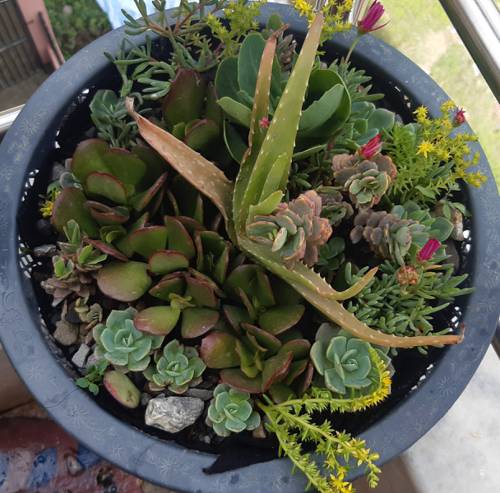
FAQ About Indoor Plant Viral Disease Management

What are the common signs of viral diseases in indoor plants?
Common signs of viral diseases in indoor plants include mosaic patterns on leaves, yellowing or streaking of foliage, stunted growth, distorted leaves or flowers, and ring spots. These symptoms can vary depending on the type of virus and the plant species, so it's important to closely inspect plants for any unusual changes.

How do viral diseases spread among indoor plants?
Viral diseases in indoor plants primarily spread through contact with infected materials, such as tools, hands, or plant debris. Additionally, insects like aphids and thrips can transmit viruses from one plant to another. Careful sanitation and pest control are essential to prevent the spread of viruses.

Can viral diseases in indoor plants be cured?
Unfortunately, there are no cures for viral diseases in plants. The best approach is preventive measures, including controlling insect vectors, using virus-free seeds and plants, and practicing good sanitation. However, removing and destroying infected plants may help prevent the spread of the virus to healthy plants.

What preventive steps can be taken to avoid viral diseases in indoor plants?
Preventive steps to avoid viral diseases in indoor plants include purchasing healthy and certified virus-free plants, maintaining clean gardening tools, regularly inspecting for pests, and applying integrated pest management practices. Isolating new plants before introducing them to your collection can also help in early detection of any diseases.

How do I identify which virus is affecting my indoor plant?
Identifying the specific virus affecting your indoor plant can be challenging. Observing symptoms closely is the first step, but for a more accurate diagnosis, laboratory testing can be conducted. Contacting a local extension service or plant pathology lab for assistance can provide definitive answers.

Are some indoor plants more susceptible to viral diseases than others?
Yes, certain indoor plants are more susceptible to viral diseases than others. For instance, begonias, African violets, and orchids are more prone to viral infections. Knowing the susceptibility of specific plant species can help in taking targeted preventive measures.

How does cleanliness affect the spread of viral diseases in indoor plants?
Cleanliness plays a critical role in preventing the spread of viral diseases in indoor plants. Clean tools, pots, and hands reduce the risk of transferring viruses between plants. Regularly disinfecting equipment and surfaces and washing your hands before handling plants can help mitigate the spread of pathogens.

What insects are most commonly associated with transmitting viral diseases to indoor plants?
Aphids, whiteflies, and thrips are the most common insect vectors associated with transmitting viral diseases to indoor plants. These pests carry viruses from infected plants to healthy ones as they feed, making pest control an essential part of managing plant health.

Can indoor plant viruses affect humans or pets?
Indoor plant viruses typically do not pose a threat to humans or pets. These viruses are plant-specific and do not infect animals or humans. However, maintaining good plant health still contributes to a safer and more enjoyable indoor environment.

Is it safe to compost plants that have been infected with viral diseases?
Composting plants infected with viral diseases is generally not recommended because the virus can persist in plant material and potentially contaminate future compost applications. It is safer to dispose of infected plants in the trash to avoid risking the spread of the virus.

How often should I inspect my indoor plants for signs of viral diseases?
Regular inspections are vital for early detection of viral diseases. Aim to check your indoor plants every couple of weeks, paying attention to any changes in appearance, growth patterns, or insect presence. Early detection can help contain and manage potential viral infections.

Can environmental stress cause viral diseases in indoor plants?
While environmental stress itself does not cause viral diseases, it can make plants more vulnerable to infections by weakening their natural defenses. Ensuring proper light, water, and nutrient conditions can help maintain a plant's overall health and increase its resistance to viruses.

What role do natural predators play in managing viral diseases in indoor plants?
Natural predators, such as ladybugs and lacewings, can help control pest populations like aphids and thrips, which are known vectors of viral diseases. By managing these pests, natural predators indirectly reduce the risk of viral transmission among indoor plants, promoting healthier environments.

How should I handle contaminated soil used for plants infected with viral diseases?
Contaminated soil should be replaced rather than reused, as viruses can remain in the soil and infect new plants. Discard the soil in an area away from your garden, or ensure it is disposed of properly if you are uncertain about its safety. Sterilizing pots before reuse is also recommended.

What are some examples of common viral diseases affecting indoor plants?
Some common viral diseases affecting indoor plants include Tobacco Mosaic Virus (TMV), Tomato Spotted Wilt Virus (TSWV), and Impatiens Necrotic Spot Virus (INSV). These viruses affect different types of plants and lead to symptoms such as leaf mosaic patterns and necrotic spots.

How can I improve the indoor climate to help prevent viral diseases in plants?
Improving air circulation, maintaining proper humidity levels, and ensuring adequate lighting can help prevent viral diseases in indoor plants. Healthy climate conditions promote robust plant growth and resilience against infections. Regularly cleaning and airing the space can also contribute to overall plant health.

Are there resistant indoor plant varieties that are less prone to viral diseases?
Yes, there are indoor plant varieties bred for resistance to specific viral diseases. Opting for these resistant varieties can be a proactive measure in managing plant health. When purchasing plants, check with nurseries about available disease-resistant options for your particular species of interest.

What are the first steps to take when I suspect my indoor plant has a viral disease?
Initially, isolate the suspected plant from the rest of your collection to prevent possible spread of the virus. Examine the plant for symptoms and, if possible, send a sample to a plant disease diagnostic lab for confirmation. Meanwhile, manage pests and maintain sanitation to protect your other plants.

How important is it to quarantine new plants to prevent viral diseases?
Quarantining new plants is critical in preventing the introduction of viral diseases to your existing collection. Keeping new plants isolated for a few weeks allows you to observe for any symptoms of disease and treat any issues before they have a chance to affect your current plants.

Can viral diseases in indoor plants lead to plant death?
Viral diseases can severely affect plant health, potentially leading to plant death if left unmanaged. While some plants may continue to survive with a viral infection, their growth and decorative appeal could be significantly compromised. Prompt attention to symptoms is essential for managing plant health.
